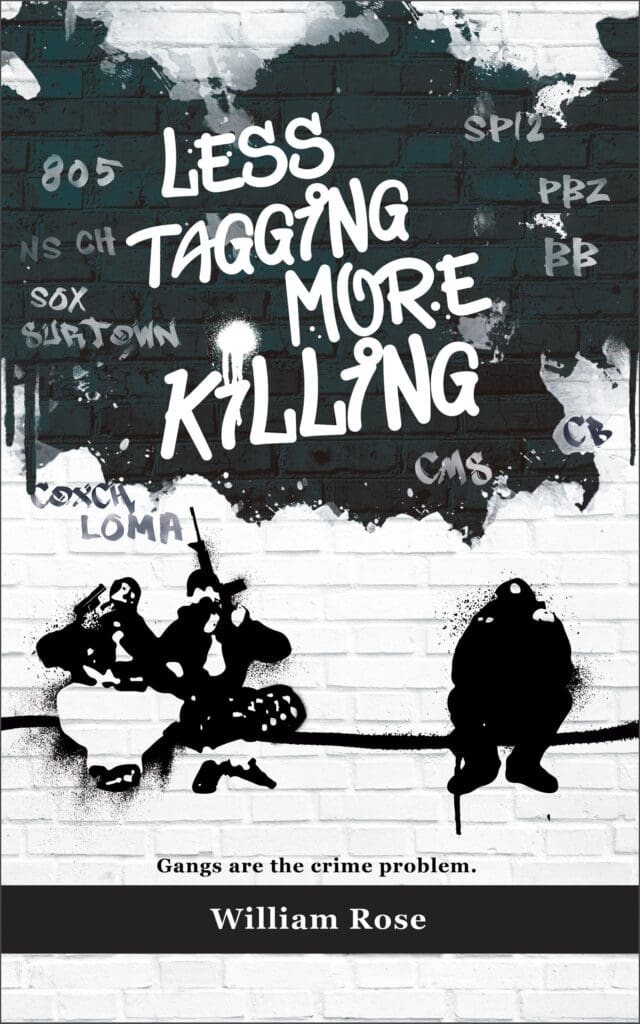Gangs Drugs: A Glimpse Into the Underground Economy of Crime
June 4, 2025
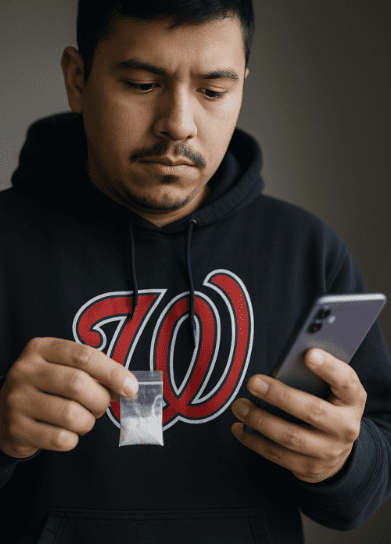
When it comes to gangs, drugs aren’t just a source of income, they’re the lifestyle and the lifeblood of the entire operation. Gang members use and sell drugs. Few topics expose the raw underbelly of American criminal life like the intersection of gangs and drugs. From meth-infested motels to digital spaces, gangs have adapted their drug trade to modern times.
The Evolution of Criminal Communication
At the start of my FBI career, wiretaps were our primary weapon against criminal enterprises like organized crime and gangs. Gangs drugs conversations dominated our recordings. I’d listen as gang members switch from threatening suppliers to sweet-talking girlfriends in seconds. More importantly, it revealed more than just criminal activity—it exposed their psychology.
In the early 2000’s, Black gang members often answered phones with phrases like “what’s cracking” or “what’s crackalacking.” Regardless of whether the gang member was Black, Hispanic, or White, the constant was always this: gangs drugs—it’s a two-word formula that explains 90% of their criminal enterprise.
We recorded calls on cassette tapes. Made multiple copies for agents, prosecutors, and defense attorneys. Most calls were mundane. Yet, the critical 10% told us everything we needed to know about the drug supply chain.
The Digital Transformation
Technology changed everything. Gangs drugs operations evolved rapidly. Social media became the new marketplace. The same slang from phone conversations now flourished in private messages and group chats. Photos of illegal drugs like marijuana, cocaine, and methamphetamine appeared with prices listed as casually as sports memorabilia. Drug dealing had gone digital.
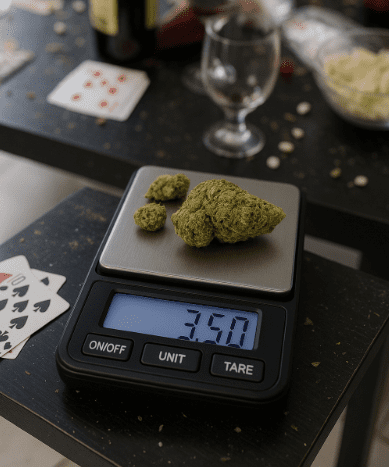
A typical exchange might look like this:
Gang member 1: “Hey are u on deck?”
Gang member 2: “Ye…how much 15$ gs 40$ 8ths 70$ quads”
Gang member 1: “I need a 8th”
Gang member 2: “Im on deck, 40$ 8th dank AF”
Outsiders might be confused. Investigators aren’t. “Deck” means drugs are available. “Dank AF” means high-quality marijuana. An “8th” is 3.5 grams. Every message reveals how the gangs drugs relationship operates.
The Language of Illicit Commerce
Gangs drugs terminology evolves constantly. Meth becomes “scante,” “windows,” or “ice.” Cocaine might be “girl,” “powder,” or “white.” Heroin? Just “B” or “black.” Even prescription drugs like Xanax hide behind names like “bars” or “zannies.”
One message I encountered said: “Hey I wana mess with that girl crystal…”
Translation: He wanted crystal meth.
Later in that same conversation:
Gang member 1: “I need ice”
Gang member 2: “The store foo”
Gang member 1: “I nee metha…scante”
The constant term-switching isn’t random—it’s operational security. Over time, patterns emerge with enough exposure. This, in turn, is another example of how the gangs–drugs relationship has become symbiotic.

Unintended Consequences of Legalization
The legalization of medical marijuana in California, created a perfect storm. Gangs drugs operations adapted immediately. To illustrate, gang members obtained medical marijuana cards, purchased product legally, then resold it online. They flaunted their inventory on social media with flashy captions and prices. The gangs drugs enterprise was no longer hidden—it was advertised openly.
How do you search a social media account? Search warrant. Some accounts were brief. Others contained tens of thousands of pages. I personally reviewed over 100 accounts of criminals. Some accounts had 35,000 pages of messages, photos, and videos.
It was exhausting work. On the other hand, revealing.
Gang members betrayed each other constantly. “Don’t tell but…” always preceded some form of disloyalty. Social media showed us who might turn informant, who had enemies, and who was climbing the ranks. Loyalty to the gang disappeared the moment someone felt disrespected, jealous—or threatened.
The Economics of Destruction Gangs Drugs
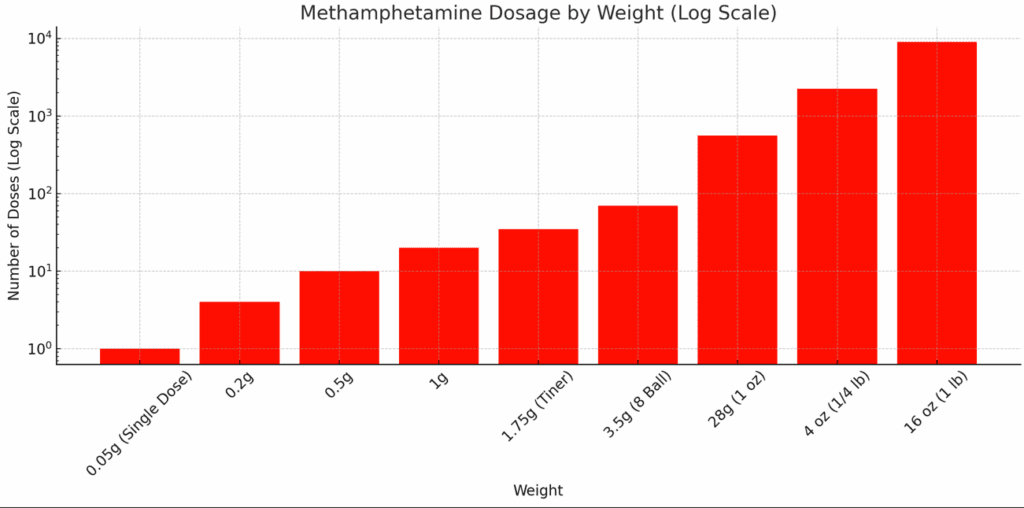
The gangs drugs economy operates on its own mathematics. A “tiner” equals 1.75 grams. An “8 ball” is 3.5 grams. A full ounce—28 grams—can produce 560 doses of methamphetamine. In one case, a federal judge rejected my search warrant because she thought an ounce was for “personal use.” I explained: That’s equivalent to 3.5 kegs of beer.
In Santa Paula in 2018, meth prices ranged from $9 to $28 per gram depending on quantity. Cocaine sold for $20,000 to $30,000 per kilogram. Meth cost between $1,000 and $3,000 per pound. Why the variance? Supply and demand. The flood of narcotics from the southern border increased supply, decreased prices, and gangs drugs sales boomed.
The Prosecutor’s Favorite: Methamphetamine
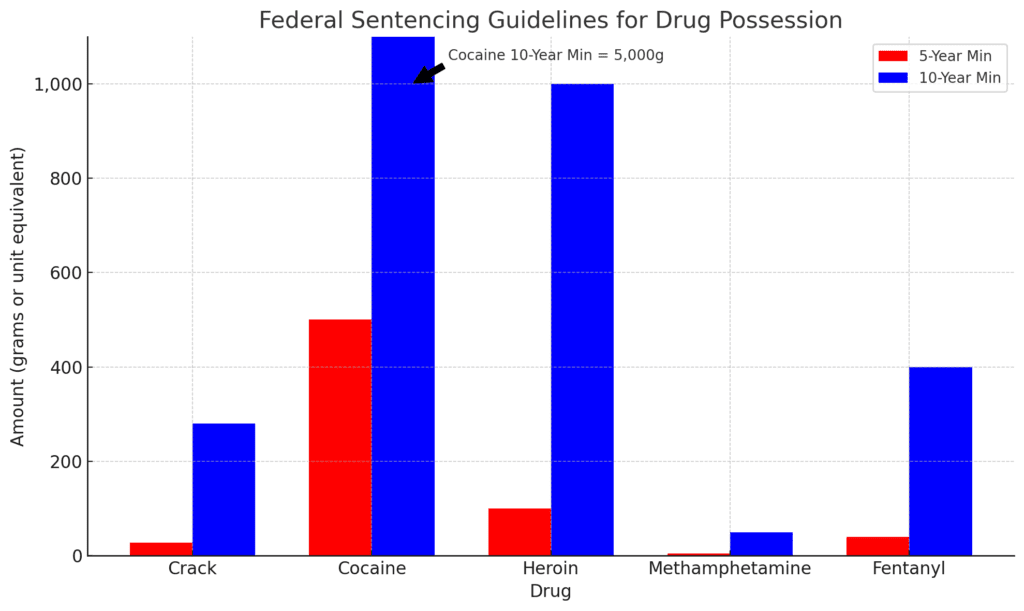
From an investigative standpoint, methamphetamine cases are ideal. In contrast to its low cost, the drug carries severe federal penalties. Five grams of pure meth can trigger a five-year mandatory minimum sentence.
The chart reveals Congress’s backwards logic. Ironically, the deadliest drugs—heroin and fentanyl—require larger amounts to trigger federal sentences than methamphetamine. Apparently, lethality wasn’t part of the calculation.
As a rule, I always recorded at least two drug deals with every target. One deal could be dismissed as a fluke. Two established a pattern. Add surveillance, a credible informant, and video evidence, the case becomes trial proof. Consequently, gangs drugs cases are much more difficult to defend when juries can watch the transaction in high definition.
Case Study: The 99% Pure Product
One case I worked involved a dealer operating from the Harvard Motel in Santa Paula. His methamphetamine tested at 99% purity—clearly not homemade. This was Mexican cartel product, smuggled directly into Ventura County. Despite the quantity and quality, the federal prosecutor offered a deal: 3 years in federal prison and deportation.
Why such leniency? In the end, the government opined it was more cost effective to deport him than pay $810,000 for his 10 years in custody.
Ironically the drug dealer was one of the many DACA dreamers. In 2012, President Barack Obama gave Deferred Action for Childhood Arrivals known as DACA. This drug dealer came to the United States as a child; however, instead of getting an education and contributing to society, he chose to sell illegal drugs to the community

Cultural Mimicry in Criminal Organizations Gangs Drugs
In Los Angeles, I worked cases involving Eastern European organized crime groups. Gangs’ drug connections linked diverse criminal organizations. What fascinated me, however, was how groups like Armenian Power—a gang of Armenian Americans—modeled themselves after Hispanic gangs. They adopted the same speech patterns, clothing styles, and slang. Over time, the gangs drugs culture had become a template for criminal organizations regardless of ethnicity.
In one case, a Korean dealer hid her product under a dog bed in her vehicle, hoping the K9 wouldn’t detect it because of her pet’s scent. Like everyone else I encountered, her suppliers were Hispanic. No matter the ethnic background—Armenian, Korean, Ukrainian—the drugs traced back to the same source: Hispanic street gangs. To learn more see the blog Hispanic Gangs.
The Violence Myth
There’s a dangerous myth that drug dealing is “non-violent.” In fact, the evidence proves otherwise. Violence shadows every transaction. Turf wars, robberies, drive-by shootings, revenge killings—all stem from one source: gangs drugs. Regardless of whether the weapon is a firearm or an addictive substance, the outcome remains the same: broken communities, addiction-ravaged streets, and shattered families. To learn more about how violence is intertwined with drugs read the blog Gangs and Violence.
A gang member I interviewed explained everyone he met in jail was involved with gangs or drugs, usually both.
Conclusion Gangs Drugs
The story of gangs drugs isn’t simply about criminals and substances—it’s about criminal justice priorities and a justice system struggling to keep up. From wiretaps to social media, the connection between gangs and drugs remains one of the most persistent threats to public safety.
It’s time to abandon the fiction that this is a victimless crime. We need to acknowledge the truth: The gangs drugs relationship destroys lives.
To learn more about gangs drugs, get the book Less Tagging More Killing.
